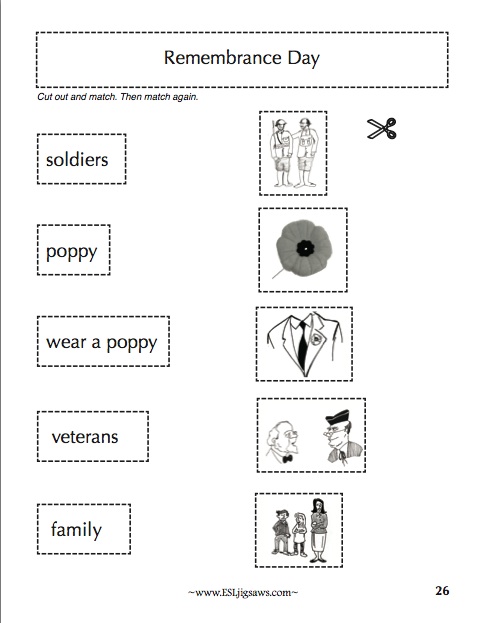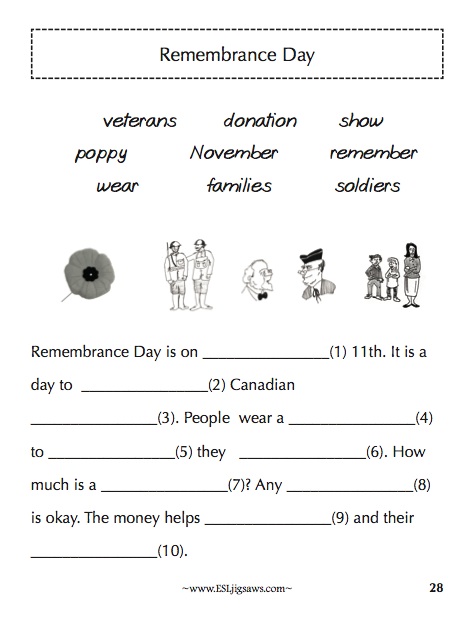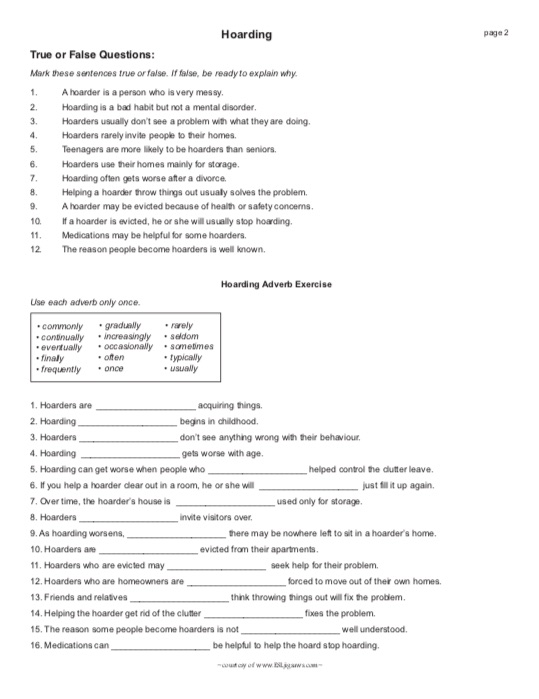Immigrants will see Canadians wearing poppies on their lapels. Help them crack our cultural code by teaching them about this important cultural observance.
I love using strip stories with low beginner ESL and literacy students to practice vocabulary and syntax. Students will need a pair of scissors to cut up parts. I start by having them match these Remembrance Day pictures and words:

Once students have mastered the vocabulary, I call out the words and have students hold up the correct picture.
The next step is having students read the story a few times in pairs. Following that, students cut up the story, put it back together in order, and read it again. I have students read it over again and again as they slowly begin to progressively turn over more and more words and sentences they remember, until the whole story has been covered and is known by memory.

I have students read to one another in pairs and then volunteer to tell the story of Halloween to the whole class when they are ready. My students enjoy volunteering for this but there is no pressure to do so if they are not ready. I follow up with oral questions about Halloween.
The last step is having students complete a cloze passage that they can then take home to review.

Have I missed a step? Or do you have any great follow up activities? If so, please let me know in the comments.
Click on any of the above images to download the PDF of the entire exercise to use with your class.













